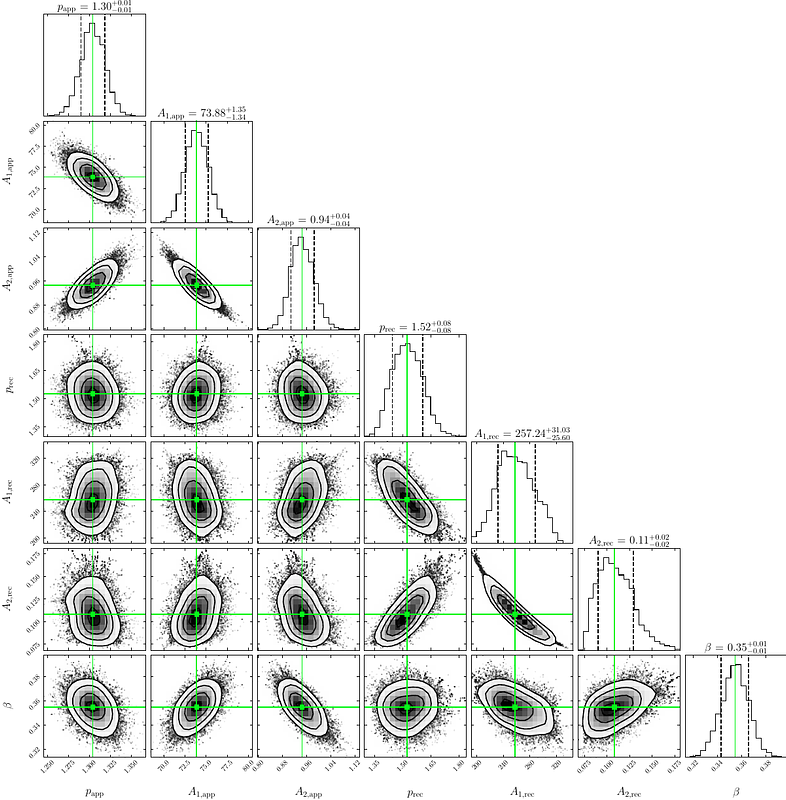A Novel Method of Modeling Extended Emission of Compact Jets: Application to Swift J1727.8-1613

A Novel Method of Modeling Extended Emission of Compact Jets: Application to Swift J1727.8-1613
Andrzej A. Zdziarski, Callan M. Wood, Francesco Carotenuto
AbstractFlat radio spectra of compact jets launched by both supermassive and stellar-mass black holes are explained by an interplay of self-absorbed synchrotron emission up to some distance along the jet and optically thin synchrotron at larger distances (Blandford & Konigl 1979). Their spatial structure is usually studied using core shifts, in which the position of the peak (core) of the emission depends on the frequency. Here, we propose a novel method to fit the spatial dependence of the flux density at a given frequency of the jet and counterjet (when observed) using the theoretical spatial dependencies, which we provide as simple analytical formulae. We apply our method to the spatial structure of the jets in the luminous hard spectral state of the black-hole X-ray binary Swift J1727.8--1613. It was the most resolved continuous jet from an X-ray binary ever observed. We find that the observed approaching jet is significantly intrinsically stronger than the receding one, which we attribute to an increase in the emission of both jets with time (observationally confirmed), together with the light travel effect, causing the receding jet to be observed at an earlier epoch than the approaching one. The jets are relatively slow, with the velocity $\sim(0.3$--$0.4)c$. Our findings imply that the magnetic field strength increased with time. Also, the magnetic flux is much lower than in jets launched by `Magnetically Arrested Disks'. Our method is general, and we propose that it be applied to jets launched by stellar-mass and supermassive black holes.